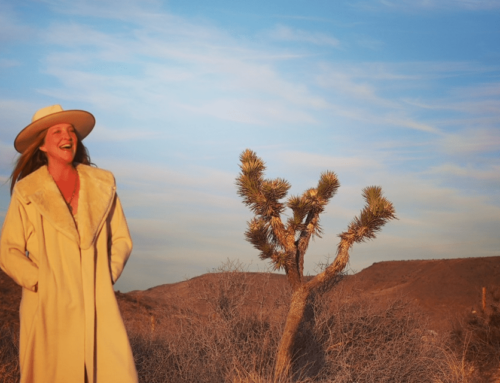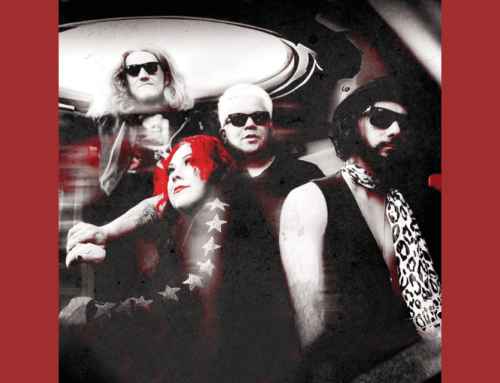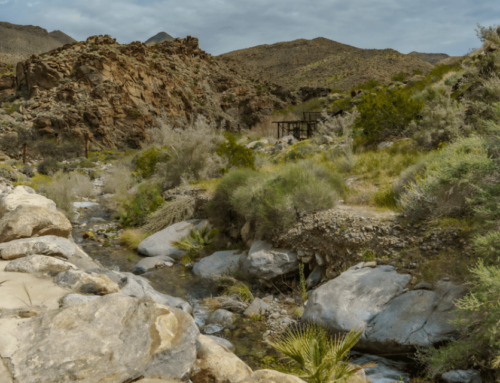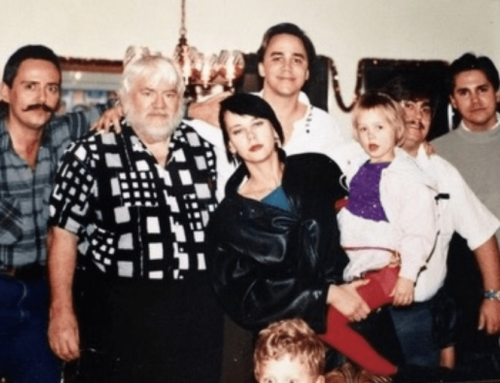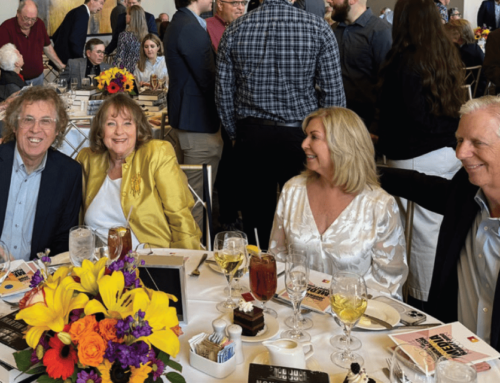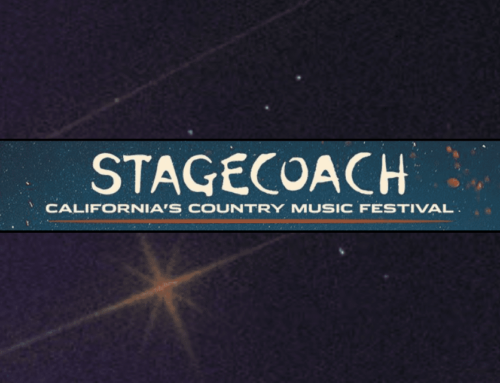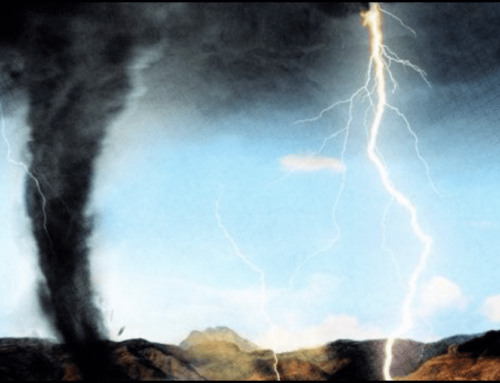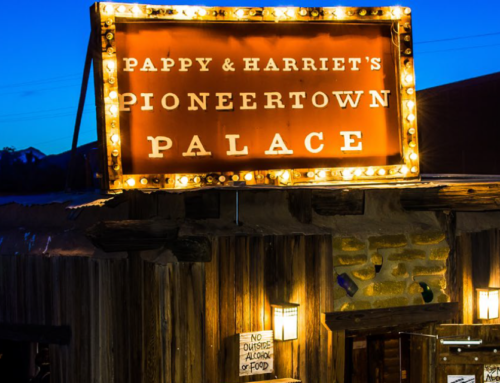
Cahuilla Bird Singers
By Bruce Fessier
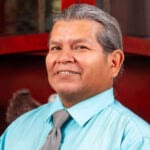
Thomas Tortez Jr., chairman of the Torres Martinez Desert Cahuilla Indians based in Thermal. Photo courtesy of the Torres Martinez Desert Cahuilla Indians
The Coachella Valley Music and Arts Festival has hosted an alternative nation of music lovers since its 1999 inception. But it’s also been hosted by an alternative nation within Indio.
At least in the eyes of Torres Martinez Desert Cahuilla Indians.
“We were a Cahuilla nation before the colonialism,” said Tribal Chairman Thomas Tortez Jr., sitting his Thermal office for a Zoom interview. “That area had Torres Martinez villages among the Cahuilla people of this desert region. We have the Indian names of those villages.”
Coachella, scheduled April 14-16 and 21-23 at the Empire Polo Club, is not actually on the Torres Martinez reservation. Much of that 24,000-acre body lies beneath the Salton Sea. Its jurisdiction also includes Martinez Canyon, where shamans once gathered sap from rare Elephant Trees said to have magical powers. The tribe’s Red Earth Casino was built on land added in 2002 when local water companies and the federal government, acting on a bill introduced by Congresswoman Mary Bono, allocated $14 million in reparations for the man-made damages that created the Salton Sea from Colorado River flooding in 1905.
Tortez wants to tell Coachella’s international audience how his ancestors once inhabited this area. In 1850, he said, 60,000 Cahuillas lived in and around the Coachella Valley. By 1860, 50,000 of them had been killed by smallpox. According to Cahuilla stories passed down via musical oral histories known as bird songs, American soldiers committed genocide by distributing blankets infected with smallpox.
Tortez says many of his ancestors may be buried under the Coachella lawns. That’s why the land is sacred to his tribe.
“That’s the thing people need to be educated on,” he said. “It’s like, you have property and the government comes and takes your backyard away and says it’s going to sell it to other people. That backyard in your eyes is still your backyard. This land was taken from the villages of Torres Martinez and sold to someone else. So it was once our land. We still say it’s our territory.”
Tortez met Coachella founder and producer Paul Tollett last year and explained what he called “the ancestral history of the Cahuilla.” Tollett invited him to acknowledge the Cahuilla land on a side stage, launching the first Coachella in three years with Bird Singers telling their stories through songs and dances.
Bird Singers from the nine Cahuilla bands, as far away as Anza and Banning, were called the Desert Cahuilla Bird Singers.
This year, when Tollett planned another land acknowledgement, Tortez decided to read a statement about their ancestral history approved by tribal elders. One elder will say a prayer in the Cahuilla language to emphasize their spiritual connection to the land.
This time, Torres Martinez Bird Singers may dominate the stage. Tollett liaison Chris Spellman says it can only fit 60 Bird Singers. So the Torres Martinez Cultural Committee will decide who will be on stage, based on their experience at year-round fiestas and ceremonies. If he can get enough wristbands, Tortez said he’d like to invite Bird Singers from his sister Cahuilla tribes.
“If you’re talking Santa Rosa, Agua Caliente, Cabazon and Morongo (Cahuilla Indians), there are over 200 Bird Singers,” Tortez said. “So the thing is vetting who’s going to sing. The discussion now is, how many do we allow from our sister tribes? They’re trying to decide between five and seven from the sister tribes – the same as last year. We came up with an idea of, ‘How about having some Bird Singers on stage and some out on the ground?’ We’re limited by how many people Paul is going to allow to be there. How many tickets is he going to give us?”
But, as exciting as it might seem to appear at Coachella, some Bird Singers want nothing to do with it. Derek Duro didn’t appear last year and won’t do this year’s land acknowledgment.
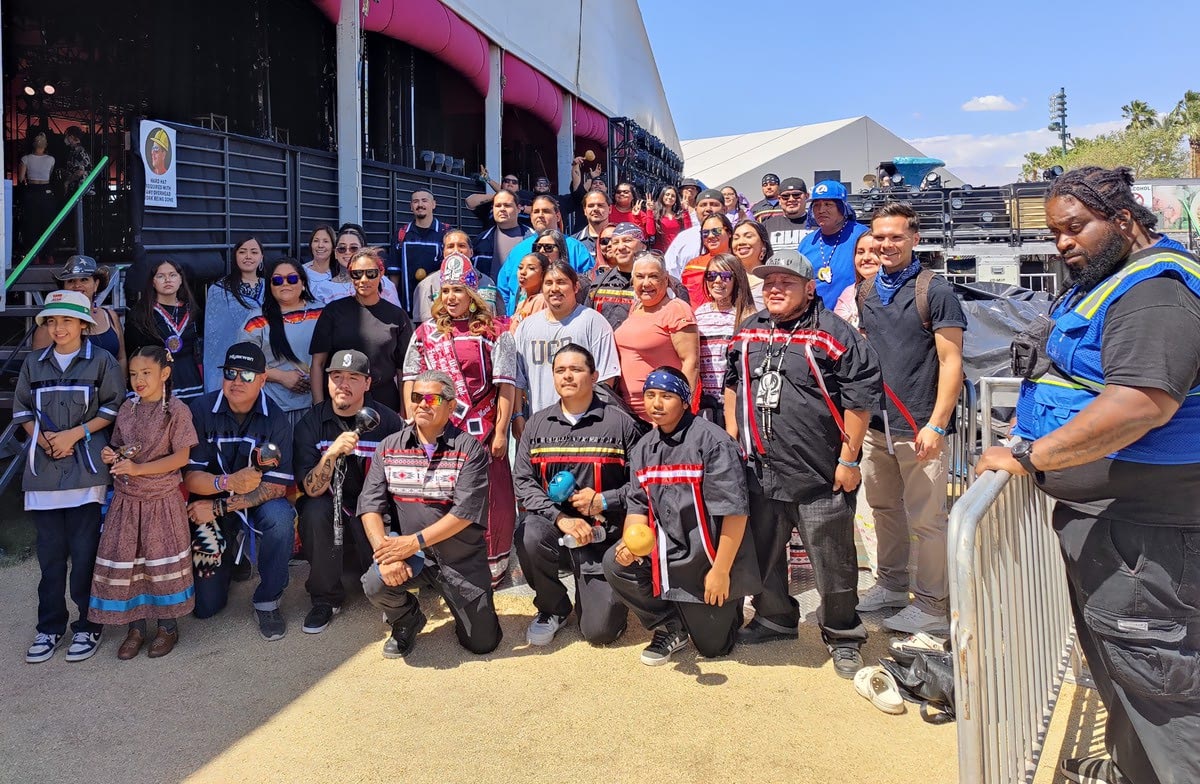
Desert Cahuilla Bird Singers who participated in last years Land Acknowledgement ceremonies at Coachella pose for a photograph behind their Coachella stage.
Photo courtesy of the Torres Martinez Desert Cahuilla Indians
Duro, 49, says he was taught to sing the bird songs by “the last spiritual advisor of Torres Martinez.” His elder has since passed away and his tradition instructs him not to say his name to outsiders without permission from his immediate family. But he said, “One of the things he taught us was not to glorify what we’re doing. It’s for our people.
“I got a lot of backlash from this from people on my rez,” Duro said. “But I see things sometimes from a different angle. Coachella is known everywhere (as) a big party. You listen to music and have a good time, and there’s nothing wrong with that. But I don’t like combining the two. That goes against what I was taught.”
Duro has nothing against pop culture.
“I like to party too,” he said. “I like to go to concerts. I’m a Metallica fan. I’m a Slipknot fan. I love getting in the pit. But I do not combine the two.
“I don’t want to go against what I was taught by my elder. Before he taught us, he sat us down — that’s what they did in the old times. They sat down and talked with you and told you, ‘If you’re going to do this, you have to do it a certain way. There’s no smoking, no drinking, no drugging. You have to live the lifestyle. I’ve taken that on. So has my brother and my sons and my cousins that are in our group. That’s what we do.”
Duro appreciates that Tollett has invited the Torres Martinez to represent Coachella Valley culture in an event in which artists from Asia, Africa, Europe, South America and North America will represent their cultural advances. He realizes bringing disparate cultures together and sharing human experiences can be a unifying spiritual experience.
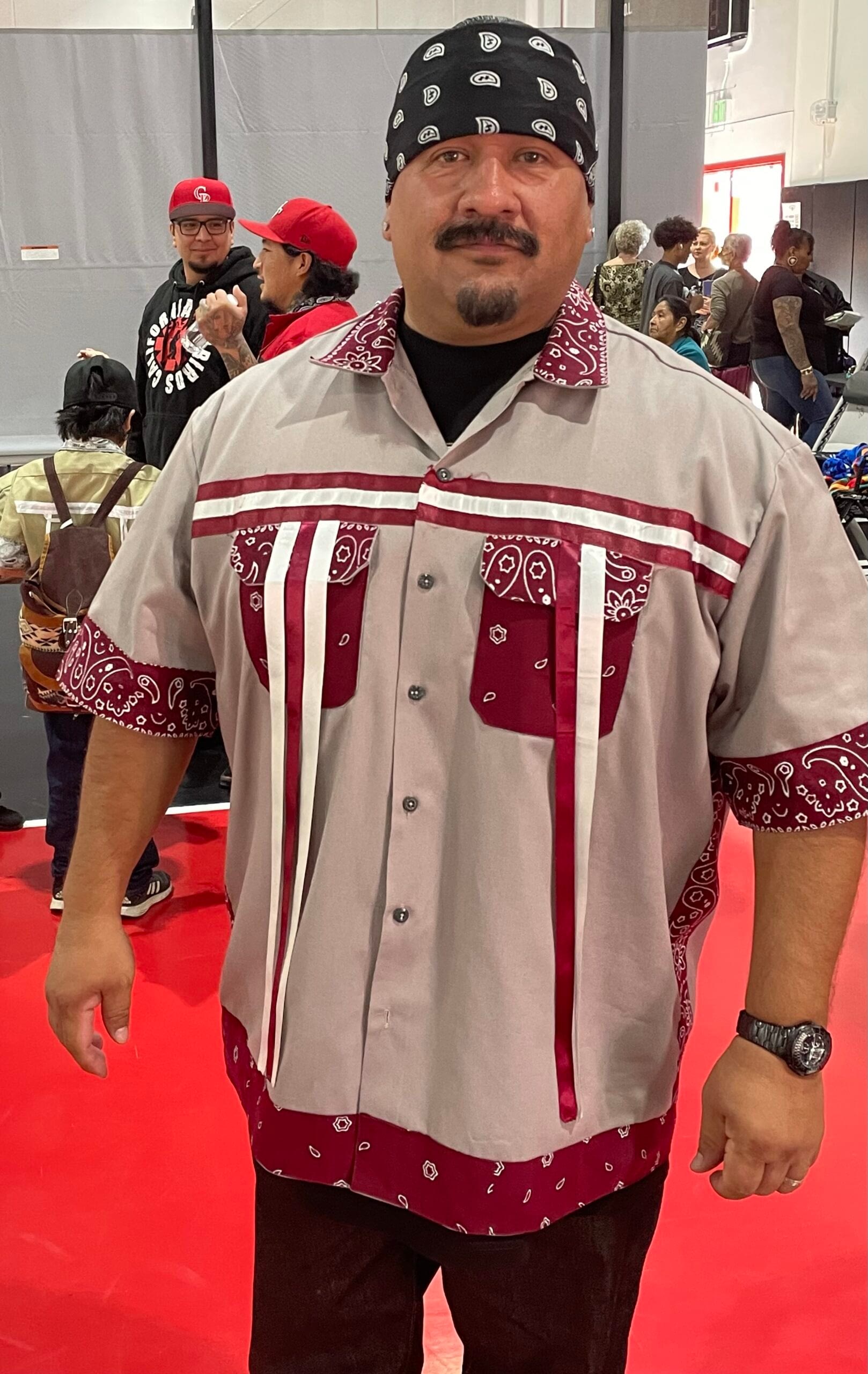
Derek Duro, leader of a group of Torres Martinez Bird Singers who will not appear at the Land Acknowledgement ceremonies at Coachella.
Photo by Bruce Fessier
“But most of the people are coming together to see these groups,” he said. “They’re not coming to see the Native Americans that were there for thousands of years. They don’t recognize the valley for who it actually belongs to.”
Tortez has spoken to Duro and others with similar views. He respects their perspective. But Tortez also had a significant mentor. His grandmother’s brother was Robert Levi, nephew of influential Bird Singer Alvino Siva, who was mentored by the last powerful, shape-shifting Cahuilla shaman, Pedro Chino, of Chino Canyon fame.
“Derek represents, I would say about a third of the tribe, maybe more, that are afraid this is going to change the tradition and culture of the Torres Martinez,” said Tortez. “I agree to a certain extent. It is a tradition and it is our culture not to commercialize it. We’re not supposed to do the ceremonies and get paid for it. That’s commercialization. And it is true that tradition is sacred. There shouldn’t be any drinking, any smoking of illegal substances because that goes against the sacredness of the ceremony when they’re singing the songs.
“Chris (Spellman) wanted to do a pre-party – invite people (to an event) sponsored by Budweiser or a cannabis agency. Our cultural committee said, ‘No, if it’s sponsored by alcohol or drugs, we’re not going that route.’ We have to keep this ship tight to keep the young ones not tempted by the commercialization.”
The bird songs performed at the land acknowledgement also won’t be the sacred songs reserved for private life-passage ceremonies. They’ll sing their oral histories, starting with creation songs and how their ancestral birds landed in the Coachella Valley area.
“They can sing about history,” said Tortez. “That’s not too sacred. They’re going to talk about how they came, how they got lost and found, how the Creator used plants or animals to help them find their way.”
Stories get skewed over time. Tortez said the Cahuilla, like many indigenous peoples, embedded their oral histories in songs to make them easier to remember. Still, there are variations sung by different Cahuilla families. That’s one reason the Torres Martinez Cultural Committee wants to be in charge of vetting Bird Singers for the land acknowledgment.
“When you sing a song, the words seldom change,” said Tortez. “That’s how they discovered singing the songs is the best way to teach and tell stories of our origin and history.”
Tortez believes Cahuillas singing bird songs in a festival with international singers can unite people more effectively than politicians.
“In my position as chairman, I’ve been to the state capital for 10 years; I’ve been to Washington D.C. for 10 years,” he said. “I go every year and advocate for the issues and concerns of the tribe. I see this as a way to get the exposure and the education out to the world about the plight of the Native American.
“It just amazes me how no one, or very few, are educated on the history of the United States and the Native American. If this is an avenue to get that narrative started, that’s what I’m after – to get the world to see the United States through the Native American eyes.”
Bruce Fessier is a journalist who has covered every Coachella. Contact him at jbfess@gmail.com and follow him at facebook.com/bruce.fessier and instagram.com/bfessier/
Main Photo: Young Torres Martinez kids are seen participating in the “Singing of the Birds” event in February at Palm Springs High School. Desert Cahuilla Bird Singers appearing at this month’s Coachella festival could include an amalgamated group of Cahuilla Bird Singers.
Photo by Bruce Fessier




